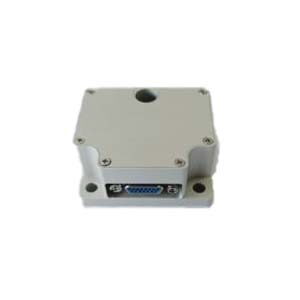Jul. 29, 2023
Measurement & Analysis Instruments
When selecting an Inertial Measurement Unit (IMU) for a specific application, one of the critical decisions is choosing between Fiber Optic Gyroscope (FOG) and Microelectromechanical Systems (MEMS) IMUs. Both types have their strengths and weaknesses, and the choice depends on the specific requirements of the application. Let's compare FOG and MEMS IMUs based on various factors:
1. Accuracy and Precision: FOG IMUs are known for their exceptional accuracy and precision. They offer high-resolution measurements of angular velocity and rotation, making them ideal for applications that demand precise motion sensing, such as aerospace, defense, and autonomous vehicles. On the other hand, MEMS IMUs have made significant advancements in accuracy over the years but may not match the precision of FOG IMUs.
2. Size and Weight: MEMS IMUs have a significant advantage in size and weight over FOG IMUs. MEMS sensors are miniaturized and can be integrated into compact, lightweight devices, making them suitable for applications where space and weight are critical factors, such as wearable devices and small UAVs. FOG IMUs, due to their optical components, tend to be larger and heavier.
3. Cost: MEMS IMUs are generally more cost-effective than FOG IMUs. The manufacturing processes for MEMS sensors have matured, leading to lower production costs, which makes MEMS IMUs accessible for a wide range of consumer and industrial applications. FOG IMUs, with their higher precision and complexity, come at a higher price point.

4. Power Consumption: MEMS IMUs consume less power compared to FOG IMUs. This makes MEMS IMUs suitable for battery-operated devices, where power efficiency is crucial for extending the device's operating time.
5. Environmental Performance: FOG IMUs are less affected by temperature changes and environmental factors like vibration and shock. They perform well in harsh environments and can maintain accuracy under extreme conditions. MEMS IMUs are more sensitive to environmental variations and may require compensation or calibration to maintain accuracy.
6. Dynamic Range: FOG IMUs typically offer a wider dynamic range, allowing them to accurately measure both slow and fast angular velocities. This feature is advantageous for applications that involve rapid changes in motion, such as aerospace and robotics. MEMS IMUs may have limitations in their dynamic range, especially in high-acceleration scenarios.
7. Application Specificity: The choice between FOG and MEMS IMUs often depends on the specific application requirements. For high-precision applications that demand accurate and reliable measurements, FOG IMUs are preferred. On the other hand, MEMS IMUs are well-suited for applications where cost, size, and power consumption are critical considerations, and high precision may not be the primary requirement.
In conclusion, selecting the right IMU depends on the balance of requirements for each application. FOG IMUs offer superior accuracy and precision but come at a higher cost and may be more suitable for specialized and high-precision applications. MEMS IMUs, with their compact size, lower cost, and lower power consumption, are more versatile and can be deployed in a broader range of applications where precise motion sensing may not be the sole priority.
Previous: Illuminating Insights: The UV Fused Silica Window in Optics
Next: What is the difference between chromatic and achromatic lens?
If you are interested in sending in a Guest Blogger Submission,welcome to write for us!
All Comments ( 0 )